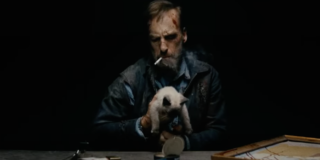The Hollywood technique of diving straight into the midst of a sex scene, a fight, or other intense scenes from the start could be just what your next ad needs to grab your audience’s attention.
Let’s face it—advertising is intrusive. The world isn’t eagerly awaiting your latest brand launch or your next product promotion. People aren’t idly scrolling through social media or sitting in front of their TVs, eagerly anticipating your advert.
It’s no surprise that a staggering 65% of ads are skipped as soon as the skip button makes its appearance.
So, how can you get the uninterested…interested?
One of the best approaches is to draw inspiration from the content people willingly consume. Think about your favourite film, TV show, or the novel you’re currently engrossed in. Chances are, their narratives throw you into the heart of the action, leaving you feeling like you’re playing catch-up with the story. You’re left with one burning question: “What’s happening here?”
And that’s precisely what keeps you hooked—your curiosity about how the story led to this point.
Don’t believe me?
A few examples to illustrate the point
1. Consider the opening scene of the film “Mr. Nobody.” It features a middle-aged man drenched in blood who, out of nowhere, produces a tin of tuna to feed his concealed cat hiding behind his leather jacket.
2. In Jim Butcher’s “Blood Rites: The Dresden Files” book, the opening sentence also throws you straight into the action: “The building was on fire, and it wasn’t my fault.”

3. And then there’s the unforgettable opening of the TV series “Breaking Bad,” where a battered RV hurtles across khaki pants, careens out of control, and crashes.
This technique is used not just by Hollywood scriptwriters and your favourite novelists, but also brands. A great example of that is Ladder’s advert that opens up on a dad who manages to dodge a swinging axe on a rope.
Not a silver bullet, but a tool for grabbing attention
Starting with the heart of your story, whether it’s a fight, a sex scene, or any other tense moment, proves far more effective than adhering to the traditional narrative structure of beginning, middle, and end, where the most compelling events often occur in the story’s middle.
Certainly, it’s not a one-size-fits-all solution and shouldn’t be the sole method for improving your ads. However, it’s a valuable tool in your marketing toolbox that you can apply not only to advertisements but also to email copy and other forms of communication.






